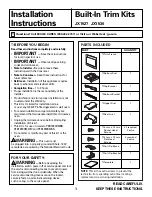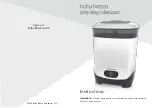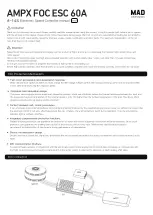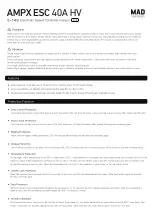
22
GAZELLE MANUAL
22
Bicycle Owner’s Manual
on a car tire. To inflate a Schraeder valve tire, remove the
valve cap and clamp the pump fitting onto the end of the
valve stem. To let air out of a Schraeder valve, depress the
pin in the end of the valve stem with the end of a key or
other appropriate object.
The Presta valve (fig. 18b) has a narrower diameter and
is only found on bicycle tires. To inflate a Presta valve tire
using a Presta headed bicycle pump, remove the
valve cap; unscrew (counterclockwise) the valve
stem lock nut; and push down on the valve stem
to free it up. Then push the pump head on to the
valve head, and inflate. To inflate a Presta valve
with a Schraeder pump fitting, you’ll need a Presta
adapter (available at your bike shop) which screws on to
the valve stem once you’ve freed up the valve. The
adapter fits into the Schraeder pump fitting. Close the
valve after inflation. To let air out of a Presta valve, open
up the valve stem lock nut and depress the valve stem.
WARNING: We highly recommend that you carry a
spare inner tube when you ride your bike, unless
the bike is fitted with tubeless tires. Patching a tube
is an emergency repair. If you do not apply the patch
correctly or apply several patches, the tube can fail,
resulting in possible tube failure, which could cause you
to loose control and fall. Replace a patched tube as soon
as possible.
5. Service
WARNING: Technological advances have made
bicycles and bicycle components more complex, and
the pace of innovation is increasing. It is impossible
for this manual to provide all the information required to
properly repair and/or maintain your bicycle. In order to
help minimize the chances of an accident and possible
injury, it is critical that you have any repair or
maintenance which is not specifically described in this
manual performed by your dealer. Equally important is
that your individual maintenance requirements will be
determined by everything from your riding style to
geographic location. Consult your dealer for help in
determining your maintenance requirements.
WARNING: Many bicycle service and repair tasks
require special knowledge and tools. Do not begin
any adjustments or service on your bicycle until you
have learned from your dealer how to properly complete
them. Improper adjustment or service may result in
damage to the bicycle or in an accident which can cause
serious injury or death.
If you want to learn to do major service and repair work
on your bike:
The best and safest way to inflate a bicycle tire to the
correct pressure is with a bicycle pump which has a built-
in pressure gauge.
WARNING: There is a safety risk in using gas station
air hoses or other air compressors. They are not
made for bicycle tires. They move a large volume of
air very rapidly, and will raise the pressure in your tire
very rapidly, which could cause the tube to explode.
Tire pressure is given either as maximum pressure
or as a pressure range. How a tire performs under
different terrain or weather conditions depends largely
on tire pressure. Inflating the tire to near its maximum
recommended pressure gives the lowest rolling
resistance; but also produces the harshest ride. High
pressures work best on smooth, dry pavement.
Very low pressures, at the bottom of the recommended
pressure range, give the best performance on smooth,
slick terrain such as hard-packed clay, and on deep, loose
surfaces such as deep, dry sand.
Tire pressure that is too low for your weight and the
riding conditions can cause a puncture of the tube by
allowing the tire to deform sufficiently to pinch the inner
tube between the rim and the riding surface. It can also
lead to a tire that slips of the rim in sharp turns or during
aggressive moves. Both can lead to falls and injurys.
CAUTION: Pencil type automotive tire gauges can
be inaccurate and should not be relied upon for
consistent, accurate pressure readings. Instead, use
a high quality dial gauge.
Ask your dealer to recommend the best tire pressure
for the kind of riding you will most often do, and have
the dealer inflate your tires to that pressure. Then, check
inflation as described in Section 1.C so you’ll know how
correctly inflated tires should look and feel when you
don’t have access to a gauge. Some tires may need to
be brought up to pressure every week or two, so it is
important to check your tire pressures before every ride.
Some special high-performance tires have
unidirectional treads: their tread pattern is designed
to work better in one direction than in the other. The
sidewall marking of a unidirectional tire will have an
arrow showing the correct rotation direction. If your bike
has unidirectional tires, be sure that they are mounted to
rotate in the correct direction.
2. Tire Valves
There are primarily two kinds of bicycle tire valves: The
Schraeder Valve and the Presta Valve. The bicycle
pump you use must have the fitting appropriate
to the valve stems on your bicycle.
The Schraeder valve (fig. 18a) is like the valve
















































